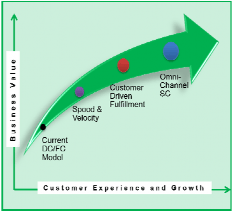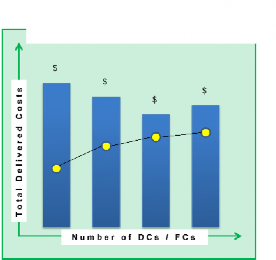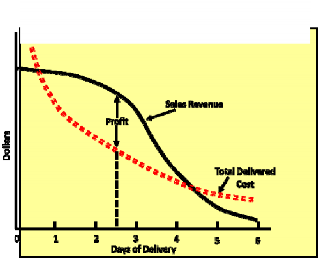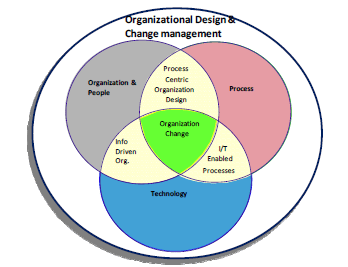Ovierview
There needs to be an operations strategy when designing a supply chain network. There are many things involved in designing a well oiled, effective, and profitable supply chain. A business must understand what functionalities and performance is expected from the network design.
The customers’ expectations are changing as new sales outlets are being used. With the application of social media, omnichannel, and ecommerce customers now have more price options, available selections, delivery methods, and shopping experiences. The ability of a business to make the customer satisfied greatly depends on fulfillment capabilities.
Progressive businesses have realized the critical nature the operations strategy has on designing a working supply chain.
What is Operations Strategy, Really?
There is no shortage of literature, education, training, webinars, and entire conferences devoted to the development and formulation of business strategy, as well as, the strategic planning that goes along with it. It is difficult if not impossible to come across any business that does not have some process in place for determining its products and its target markets.
Common questions for all leadership are:
What should be our vision and mission? What should we sell? Who are our customers?
Until recently there has been little attention given to the strategies for “operationalizing” these business strategies. Several measures have altered this expectation:
-
Complexity: As businesses have expanded, regulations have widened, and volumes have increased, so have complications.
-
Volatility: As products and customers have expanded, so have choices, increasing risks and uncertainties.
-
Differentiation: As more competitors have entered the market, so has the need for differentiation.
-
Sales and Marketing Channels: The Internet has changed everything.
-
Speed to Act: As lead times have lengthened for product acquisition and customers demand more there is conflict in nearly all functions of the business process.
The need for an operations strategy has come about to address these measures. Unless companies have a welldefined and comprehensive strategy for operations, they will fail to achieve an effective business strategy.
A basic business strategy is about four distinct choices:
-
What business should we be in?
-
What products will we sell?
-
Who is our target market?
-
Why will they buy our products?
At its basic level operations strategies are about:
-
What capabilities are needed to deliver products to all markets efficiently and effectively, so that the business objectives will be achieved?
-
The operation strategy is determining how a company will operate the supply chain and the customer service in order to achieve the business goals. This involves decisions about assets, locations, processes, people, technologies, and inventory policies.
-
It is important to separate the necessities from the differentiators. A company needs these basic capabilities to be able to compete within its industry. The mega processes of supply chains illustrate this point well. When a company deals with products it must have a PLAN – BUY – MAKE – MOVE – DISTRIBUTE – SELL strategy. Other forms of basic capabilities are needed for support including, information technology, backoffice functions, human resources, sales, and marketing.
When the company seeks differentiating capabilities in order to outperform competitors the operations strategy becomes even more important. Determining how best to operate is a matter of strategic choice. Developing the right operations strategy for a business is a challenge that must address the following points with respect to network design:
-
Focus on total value and profit maximization, not cost optimization:
An increasing number of businesses are asking the question, “how can my supply chain be used to create a strategic advantage that will provide profitable growth and maximize business value?” Maximizing profit and value is a totally different objective than traditional network optimization projects, which defines the objectives as optimizing costs while maintaining customer service levels. Today with a focus on profit maximization, cost optimization is not the dominant driver for many network design projects. How a company meets its customer service expectations has changed and will continually change. In addition to great prices customers now require bestinclass convenience, better product selection, and personalized experience. Cost optimization is important. Creating capabilities that will drive profitable growth and maximize profits are more important and require a totally different approach to network design. Currently combinations of operating scenarios are required to drive alternative network models. Sensitivity analysis is performed to evaluate impacts on how a company is working to improve the parameters it uses to drive shareholder value, examples include: EBIDTA, capital employed, working capital, operating expenses, tax effectiveness, margins, and cashtocash conversion.

Figure 1
-
Network structure and capabilities impact demand:
More than ever companies are realizing that the network structure effects customer service. A good network design drives demand growth. The traditional way of network design considered demand as independent of the network structure and its capabilities to provide service. This is an obsolete why of thinking. If a retailer can provide products to customers faster for the same or lower costs customers will buy more. The ability of fulfillment capabilities to increase customer demand is a game changer for network design. Predictive analysis is needed to determine and evaluate the tradeoffs of demand levels associated with different network configurations and service levels.

Figure 2: Traditional Network Design

Figure 3: Network Design Drives Revenue
-
A Robust Analysis of DC, FC or warehouse operations is needed:
Conventional network design focuses primarily on transportation, number of facilities, and their locations. This does not address material handling equipment and systems within the four walls of the DC, FC, or warehouse. A key consideration for network design is the ability of the warehouse to fulfill orders in a quick and cost effective manner. The ability to determine the viable options will enable the most accurate analysis of capital and operating costs and the service levels that can be achieved. An indepth analysis of all aspects of material handling equipment and systems within the facilities provides a view of the solutions not usually included in network designs.
-
Global does matter:
The scope of network projects begins with the suppliers. When the starting scope of a network project is the port of entry it may limit very viable options such as consolidation centers / DCs in China (or other sourcing countries) or different ports of entry. It also does not capture the complete supply chain delivered costs.
-
Omnichannel and ecommerce has changed everything:
It is no secret that the surge of ecommerce, omnichannel, multichannel, and social media along with the offerings of Amazon, eBay, WalMart, other large online retailers and manufacturers who are selling online have significantly raised customer expectations. The customer demands rapid delivery, free shipping, and free returns. Through social media, increased customization, and faster delivery customers are clearly signaling that a company’s success and failure rest on high expectations of price, selection, convenience, and experience. Customers expect good value for their money and have a strong awareness of the total price (item price + shipping cost + sales tax) of the item they want to buy. Customers will currently accept three to four day delivery. Going forward more rapid delivery will be the norm for most items sold online. Certainly retail has been the industry most effected but the rising customer demands are spilling over to all industries. Many nonretailers are finding themselves being forced into offering online ordering and fulfillment of ecommerce orders. As a consequence, companies are struggling to define their new role. Are they are retailer? A wholesaler? An eretailer? A manufacturer?
The omnichannel and ecommerce world makes network design much more difficult. It is no longer a straightforward computerbased exercise of modeling DCs, FCs, and transportation used to minimize total costs. A huge challenge that must be addressed is how this network should best meet customers’ expectations rapid delivery, free shipping, and free returns. Rapid delivery can be achieved via expedited freight or by placing inventory in the local markets. Certainly the additional high cost of expedited freight is not a viable longterm solution. Instead companies need to analyze the best way to place inventory in local markets. There are at least five fulfillment scenarios for ecommerce fulfillment that need to be considered.
-
Distribution Centers (DC’s) and Fulfillment Centers (FC’s):
The DC’s and FC’s have all SKUs that the retailer wishes to stock, fulfills customer orders, and ships directly to the customer. Often these networks only have one or two DC’s and FC’s – depending on the size of the company. A network of DC’s and FC’s is often the lowest cost network. Resulting in a significant number of customers receiving three to five day shipping. Regional Fulfillment Centers (RFC): RFC’s are facilities that usually carry a subset of the total SKUs that a company wishes to carry. Usually this subset is high volume SKUs or SKUs that may be regional in nature. Each RFC would fulfill orders for customers in its service region. Orders for SKUs that are not stocked in the RFC would be fulfilled by the FC (or from a vendor for endless aisle SKUs) and shipped directly to the customer or shipped to the RFC for consolidation with other SKUs for a particular customer. Adding a RFC to the network will require more inventory but many more customers can have their orders delivered in one to three days and outbound transportation costs will be less.
-
Local Fulfillment Centers (LFC):
LFC’s take the regional concept to the local level. LFC’s would have an even smaller subset of high volume SKUs. Orders for local a customer would be fulfilled by the LFC and delivered to the customer by local couriers. If a customer orders SKUs that are not stocked in the LFC, then the FC, RFC, or vendor would fulfill those SKUs and ship directly to the customer or to the LFC for consolidation with the rest of the order. Using LFC’s provides significantly faster customer delivery for much of the customer’s demand, usually next day and outbound costs will be less. Unfortunately with this strategy the overall fixed costs and operating costs are higher.
-
Local Fulfillment Center with Pickup (LFCP):
The LFCP concept expands the LFC to include customer pickup. Allowing customers to pickup orders will require additional capabilities such as parking, a front counter, and payment processing. Consideration should be given to locating LFCP near or in shopping areas in order to optimize customer convenience.
-
Stores:
Many progressive retailers have begun to use their stores to fulfill ecommerce orders. There are many variations to this process including fulfilling from the retail shelves and / or from the back room, shipping to customers by parcel carrier or courier, and customer pickup. Using stores for fulfillment often results in the fastest customer delivery. This may require modifications to the stores and it will require additional systems and people to handle fulfillment. The biggest network issue to address is what volume of ecommerce orders a store can fulfill without negatively impacting retail operations.
-
Combining a DC and FC:
A key network design question for omnichannel retailers is should the DC and FC be separate or combined to leverage shared inventories in a multichannel fulfillment environment providing brickandmortar store fulfillment and ecommerce fulfillment out of the same facility? Should there be one facility or multiple facilities? Far too many supply chains have been designed with the DC and FC separated. Given where the retail industry is today and where it is headed most DC’s and FC’s should now be combined. Combining the DC and FC offers many advantages:
-
Inventory optimization
-
Fewer challenges in inventory allocation by channel
-
Growing number of channels and evolution of channel volumes
-
Enhanced justification of automation
-
Reduction of the impacts of overall peak volumes, which can smooth out staffing and facilitate crosstraining of fulltime warehouse employees
-
-
Real Estate:
When considering major investments an understanding of the availability and cost of real estate can be very meaningful. Unfortunately available government or other databases do not accurately reflect current market conditions. Companies need to form relationships with national real estate companies that can identify the actual market and cost drivers to better clarify the alternatives.
-
Don’t Forget Incentives can be Significant:
Often missed but substantial elements of network analysis are grants and incentives that can be provided by state and local governments. Timing is everything and committing to a location before identifying the relative opportunities when bringing new jobs to an area or even saving jobs from relocating can often be significant.
-
Change Management is Critical:
Change management provides the bridge from network design to successful implementation and transition to a new network. Inadequate change management is the prime reason why redesigned networks do not operate at the levels projected during network design. Despite its critical nature, change management is often overlooked during the network design process. Change management begins with an assessment of the change readiness of the organization. It may include redesign of the organization, the processes and supporting technology. The result may be a change leadership strategy, organization, job role, governance strategy, communications strategy, and / or training strategy.

Figure 4
IN CONCLUSION
Supply chain network performance is very sensitive to changes in business strategy and operating environments. Some of these changes include, market or sourcing changes, acquisitions, new products, new sales channels, and growth. To maintain a competitive advantage, the best companies have made network design an ongoing process as the company evolves. These companies are constantly tweaking and reinventing their networks and by doing this are realizing significant benefits. Designing an effective profit producing supply chain is an ongoing process that needs to change with the times.
About Tompkins International
A supply chain consulting and implementation firm that maximizes supply chain performance and value creation. We enable clients to be more profitable and valuable, while also becoming more agile, flexible, and adaptive to the marketplace. Tompkins collaborates with client teams to develop improved operations strategies, supply chain planning, and execution across all the Mega Processes of supply chains (PLANBUYMAKE MOVEDISTRIBUTESELL). Tompkins is headquartered in Raleigh, NC and has offices throughout North America and in Europe and Asia. For more information, visit: www.tompkinsinc.com.
Register for the 2015 Tompkins Supply Chain Leadership Forum
Meet the expert! Learn more about this topic and meet the report author Bruce Tompkins at the Tompkins Supply Chain Leadership Forum in San Antonio, Texas from August 31- September 2, 2015.
For details and registration information, click here. To register, contact Patty Trocchio at events@supplychainconsortium.com.



